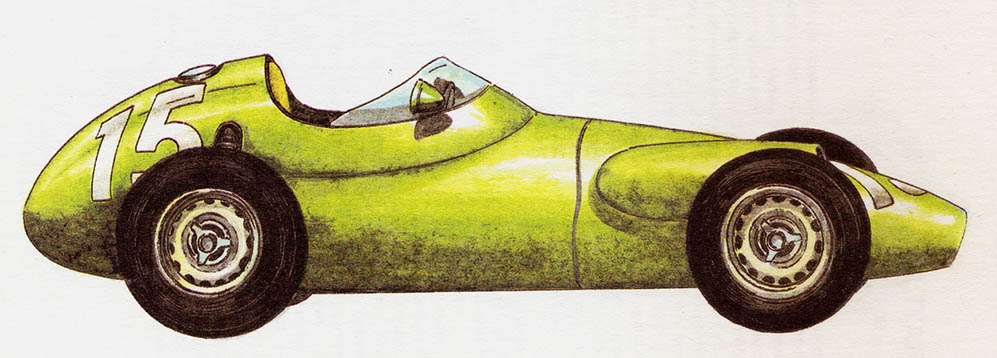BRM 25 – year 1956
British Racing Motors, Lincolnshire, Bourne, United Kingdom.
The unhappy beginning of the career of the 16-cylinder engine and the constant defects of the British BRM car contributed to the decision to dissolve the company and sell the cars.

British Racing Motors, Lincolnshire, Bourne, United Kingdom.
W 1953 BRM was taken over by Sir Alfred Owen, owner of the Rubery company, Owen & Co. Ltd., who founded the Owen Racing Organization”. He decided to participate in the competition under the unchanged name of BRM. The cars were equipped with less complex four-cylinder engines initially located at the front. They were in-line displacement engines 2497 cm3 (∅ 102,87 mm x 74,93 mm). Valve timing 2 x OHC had two camshafts in the cylinder head. Recipes up to 1958 the year did not specify the composition of the fuel. Mostly a blend of alcohol was used, benzene and gasoline with the addition of castor oil. Model 25 from year 1955 used fuel with 50 % alcohol content and reached maximum power 182,5 kW (248 KM) by 9000 RPM. A year later, the power was increased to 198,7 kW (270 KM) by 7500 RPM. Latest model version 25 with 1957 the year already had the power 211,9 kW (288 KM) by 8250 RPM. It was the smallest and lightest car in the formula 1, Moreover, it was distinguished by the smallest ratio of the piston stroke to the cylinder diameter. Its main drawback was the unreliable brakes, which were prone to defects, which was often the cause of accidents.
The car's successes were Jean Behra's victory at the Grand Prix Caen and the first three places at Silverstone, in order: Jean Behra, Harry Schell i Ron Flockhart. W 1958 Schell and Behra finished second and third in the Dutch Grand Prix in Zandvoort. W 1959 In 2014, the BRM car concept was changed and the engine was placed in front of the rear axle. With unchanged capacity, the engine developed power 200,2 kW (272 KM) by 8500 RPM. working on 100 octane gasoline. This model, known as "Project 48″ contributed to the later successes of BRM cars. Pierre Berthon's successful construction won Swedish competitor Joakim Bonnier at the Dutch Grand Prix in Zandvoort, where with average speed 149,5 after many hardships he defeated Jack Brabham and Stirling Moss, on Cooper-Climax cars.